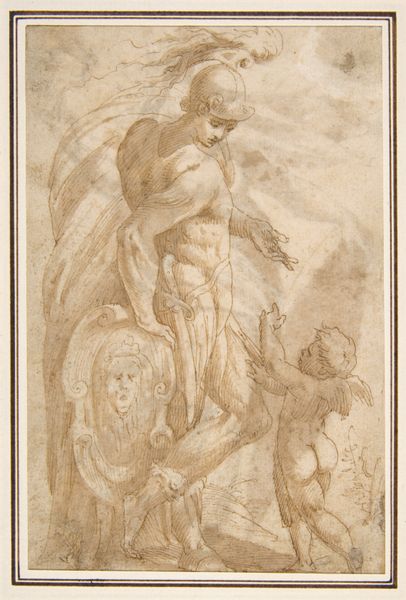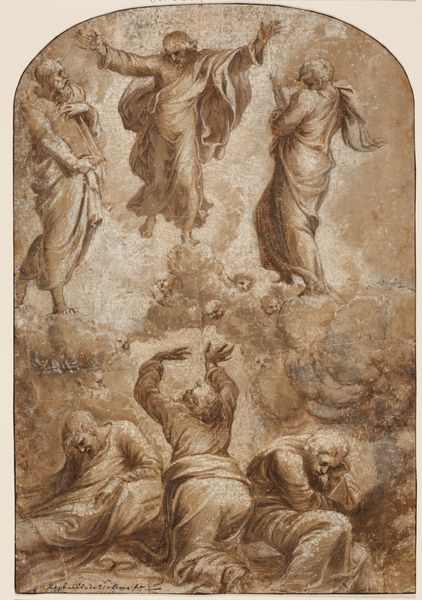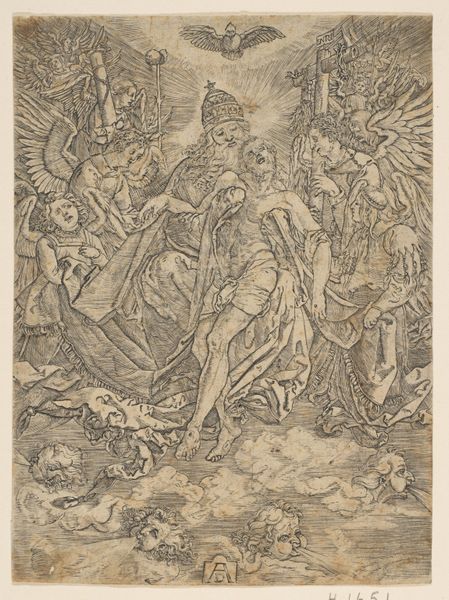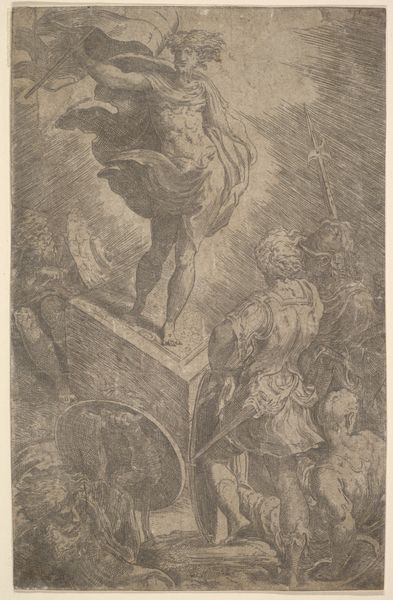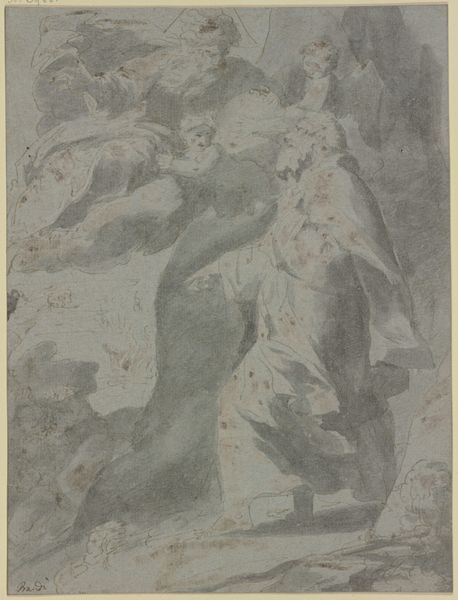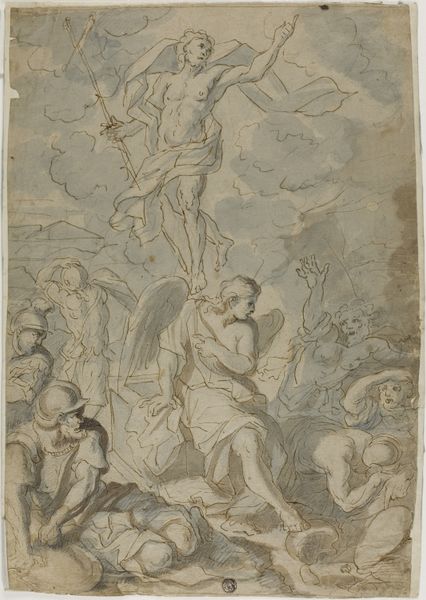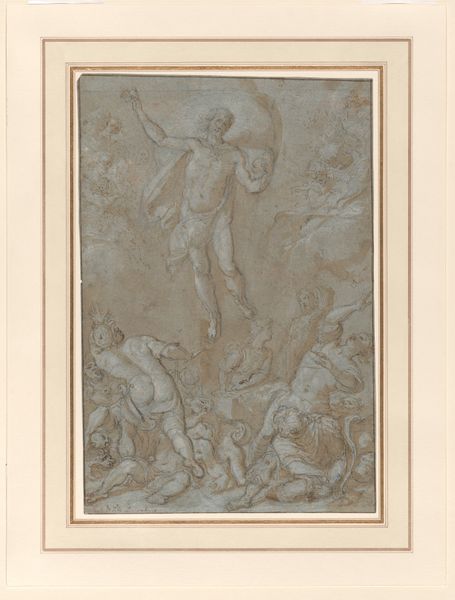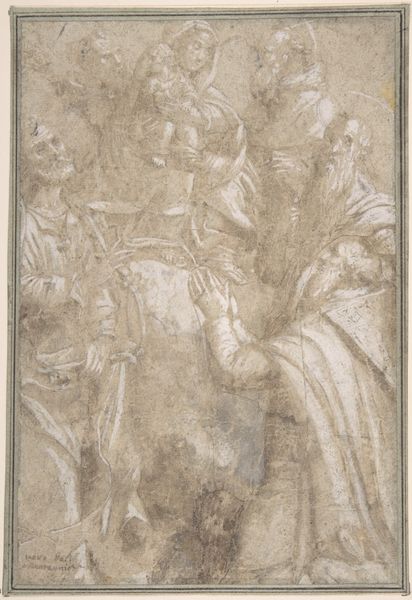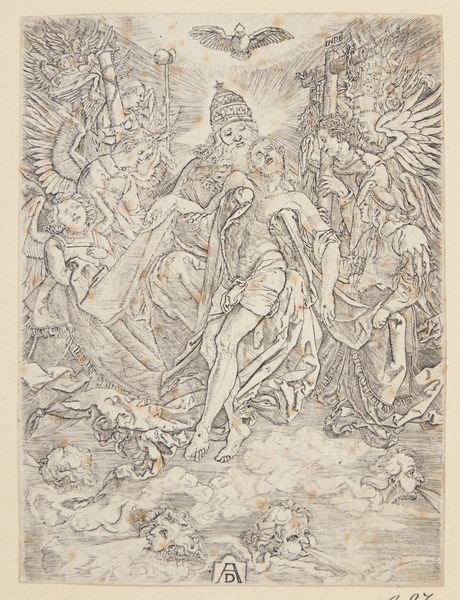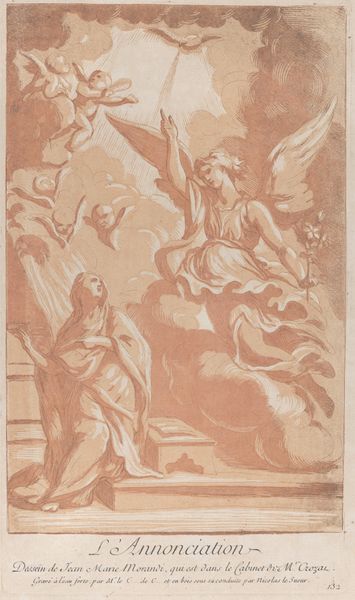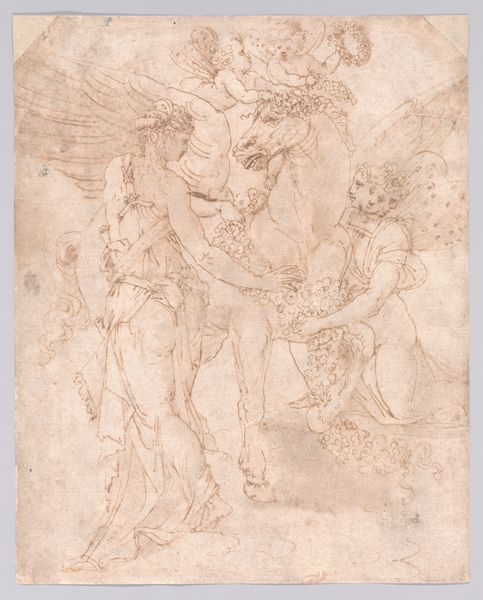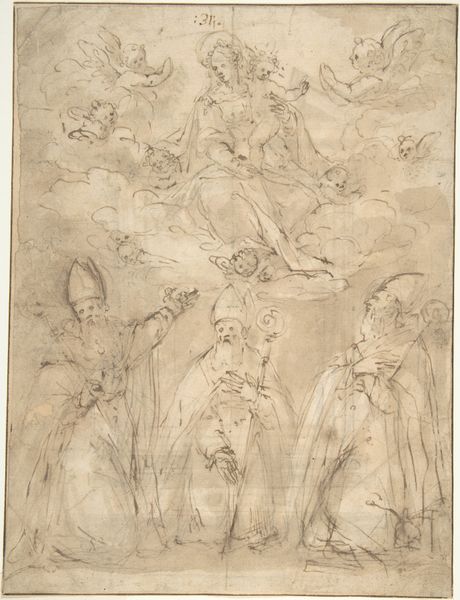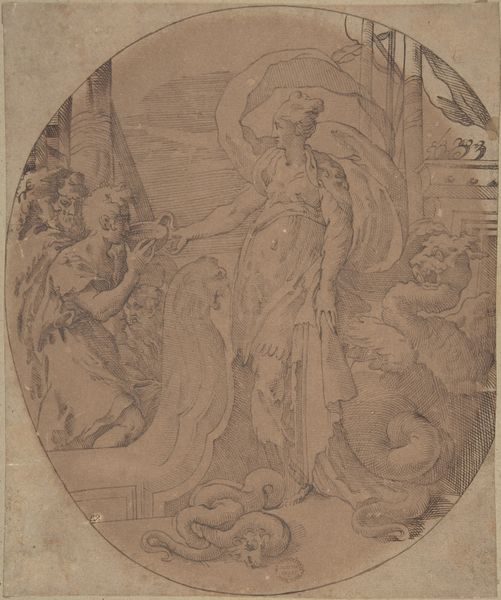
drawing, print, etching, ink
#
drawing
#
narrative-art
#
ink painting
# print
#
etching
#
etching
#
figuration
#
ink
#
romanticism
Dimensions: plate: 10.8 x 7.9 cm (4 1/4 x 3 1/8 in.) sheet: 31.1 x 23.5 cm (12 1/4 x 9 1/4 in.)
Copyright: National Gallery of Art: CC0 1.0
Curator: Here we have William Blake's "The Chaining of Orc," created in 1812, rendered as an etching and drawing in ink. Editor: My immediate response is one of somber confinement. The muted tones amplify a feeling of suppression; the bodies appear trapped within the stark composition. The materials communicate an economy and perhaps, a struggle. Curator: Indeed. Observe how Blake uses line to define musculature and create dynamism. The upward reaching figure seems poised, almost defiant, in the face of his constraints. Consider, too, the allegorical weight of Orc. Editor: Orc, the symbol of revolutionary energy, right? The method Blake uses to bind him seems significant. What type of chain? Are those actual metal links? What does the physical act of restraint entail in terms of societal power? Blake worked as a printer; did his personal relationship with the industrial world influence this perspective? Curator: Absolutely. Blake's printmaking background and social observations certainly influenced his vision. However, interpretatively, we should note that Orc’s fiery essence, typically portrayed as revolutionary ardor, appears dampened, reflecting the subjugation of spirit, if you will. Editor: But dampened by what? The labor involved in physically creating such detailed work itself— the inking, the printing— this highlights a certain kind of physical struggle paralleling the content it tries to depict, perhaps revealing Blake’s complex view of labor versus the idealized figure. What statement is he making about these conflicting creative tensions? Curator: Your perspective allows us to observe that the work isn’t merely representational; it’s almost a testament to a particular kind of materiality in the making process itself. Blake intertwines the message with the physical experience, reflecting a powerful comment about form echoing content. Editor: Precisely, thank you for directing my view. It’s as much about the ideas being conveyed as it is about the artistic practices that helped shape them. Curator: It truly shows how different vantage points grant a deeper and fuller insight into what William Blake sought to express.
Comments
No comments
Be the first to comment and join the conversation on the ultimate creative platform.
